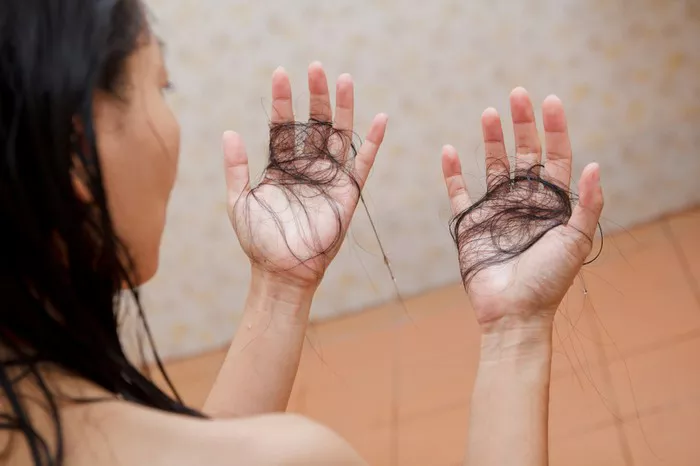The act of pulling one’s hair, known as trichotillomania, is a complex psychological condition that can have profound effects on both physical and emotional well-being. Individuals grappling with trichotillomania often find that their hair falls out easily due to the repeated pulling. In this article, we will delve into the intricacies of trichotillomania, exploring the reasons behind compulsive hair pulling and the resulting challenges it poses.
Defining Trichotillomania: A Hair-Pulling Disorder
Understanding Trichotillomania:
Trichotillomania is classified as an impulse control disorder characterized by the recurrent urge to pull out one’s hair.
This compulsive behavior can lead to noticeable hair loss and may impact various aspects of an individual’s life.
Prevalence and Demographics:
Trichotillomania can affect individuals of any age, gender, or background.
Its onset often occurs during adolescence, but it can persist into adulthood.
Compulsive Hair Pulling: Causes and Triggers
Psychological Underpinnings:
Trichotillomania is linked to psychological factors, including stress, anxiety, or emotional distress.
The act of pulling hair becomes a coping mechanism for managing difficult emotions.
Sensory Gratification:
The act of hair pulling may provide sensory gratification, offering a sense of relief or pleasure for individuals with trichotillomania.
This reinforcement contributes to the compulsive nature of the behavior.
Recognizing Signs and Symptoms
Visible Signs of Hair Loss:
One of the primary signs of trichotillomania is visible hair loss, often in irregular patterns.
Individuals may have areas of thinning or bald patches due to the repeated pulling.
Presence of Broken or Short Hair:
Examination of pulled hair may reveal characteristic features such as broken or short hairs, indicative of the act of pulling.
The distinctive appearance aids in the diagnosis of trichotillomania.
Impact on Physical and Emotional Well-being
Physical Consequences:
Frequent and forceful hair pulling can lead to physical consequences, including damage to the hair follicles and scalp.
In severe cases, complications such as infections or scarring may arise.
Emotional Distress:
Individuals with trichotillomania often experience emotional distress, shame, or embarrassment due to their hair-pulling behaviors.
The impact on self-esteem and body image can be significant.
Treatment Approaches for Trichotillomania
Cognitive-Behavioral Therapy (CBT):
CBT is a widely recognized and effective therapeutic approach for trichotillomania.
It focuses on identifying and addressing the underlying thoughts and behaviors associated with hair pulling.
Habit Reversal Training (HRT):
HRT is a specific type of behavioral therapy designed to interrupt and replace the habit of hair pulling with alternative behaviors.
It involves self-monitoring and the development of strategies to manage the urge to pull.
Medications:
In some cases, medications such as selective serotonin reuptake inhibitors (SSRIs) may be prescribed to help manage underlying anxiety or depression.
The use of medications is typically considered in conjunction with psychotherapy.
Challenges in Overcoming Trichotillomania
Relapse and Treatment Adherence:
Trichotillomania can be challenging to overcome, and relapses are not uncommon.
Consistent engagement with therapy and ongoing support are crucial for long-term success.
Impact of Co-occurring Disorders:
Trichotillomania often coexists with other mental health conditions, such as obsessive-compulsive disorder (OCD) or anxiety disorders.
Addressing these co-occurring disorders is integral to comprehensive treatment.
Support Systems and Coping Strategies
Building a Support Network:
Individuals with trichotillomania benefit from building a strong support network, including friends, family, and mental health professionals.
Open communication fosters understanding and encouragement.
Developing Coping Strategies:
Identifying healthy coping strategies for managing stress and emotional distress is essential.
Engaging in activities that provide relaxation or diversion can help redirect the urge to pull hair.
Conclusion
In conclusion, trichotillomania is a challenging condition characterized by the compulsive urge to pull out one’s hair, leading to noticeable hair loss. Understanding the psychological underpinnings, recognizing signs and symptoms, and seeking appropriate treatment are crucial steps in addressing this disorder. Effective therapeutic approaches, such as cognitive-behavioral therapy and habit reversal training, offer hope for individuals seeking to overcome trichotillomania. Building a support network and developing coping strategies contribute to a holistic approach to managing this complex disorder. While the journey to recovery may involve setbacks, the commitment to treatment and self-care is a vital path towards regaining control over hair-pulling behaviors and fostering emotional well-being.

